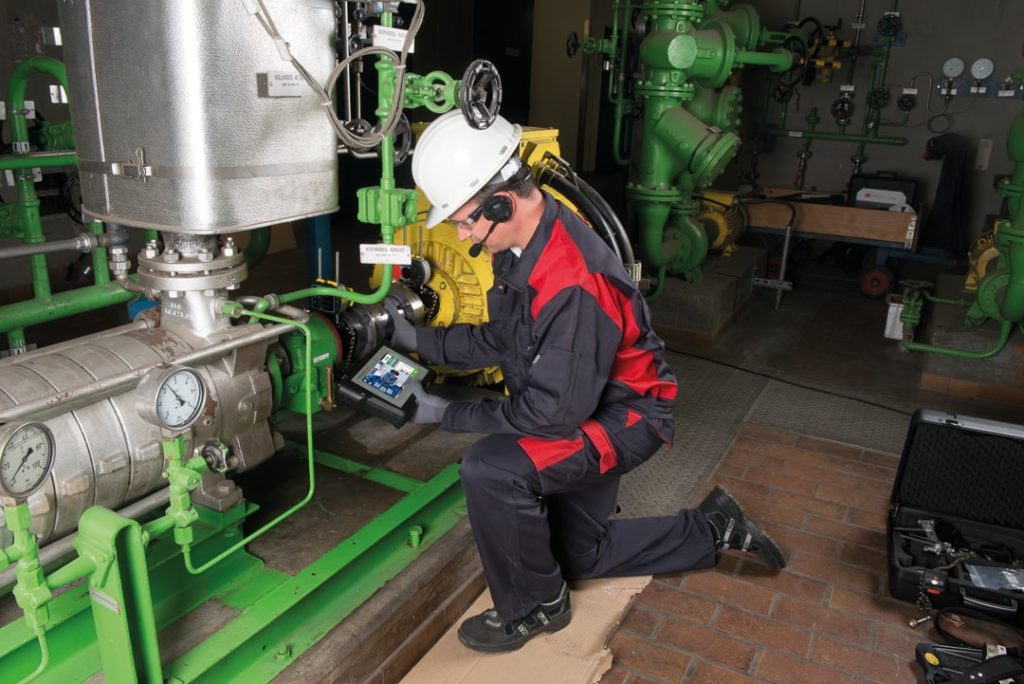Rotational unbalance is one of the leading causes of damage in rotating machines – like rotors for electric motors, fans, turbines, pumps, and more.
Rotational unbalance causes high vibration levels, overheating, and premature wear and tear on machine bearings. Over time, unbalance can shorten the lifecycle of your assets. Left unaddressed, it will also lead to more frequent breakdowns and to increased maintenance costs.
Fortunately, rotational unbalance (also known as rotational imbalance) is not hard to resolve. The right balancing tools can correct balance issues in your rotating machinery before the problem becomes serious. In fact, applying those tools is a key aspect of any predictive maintenance or condition monitoring strategy – it’s an easy way to make a big difference throughout your plant.
We’ll take a look at the different types of rotational unbalance and some of the root causes. We’ll also talk about how to solve this problem.

What is Rotational Unbalance?
Rotational unbalance, rotational imbalance, and rotating unbalance are all different names for the same problem.
Simply put, rotational unbalance happens when weight is distributed unevenly around an asset’s axis of rotation. Another way to put this is that the rotor’s center of gravity needs to align with its center of rotation.
An unbalanced rotor can’t rotate smoothly. It wobbles, creating excess friction, vibration, and noise in the process. Over time, this wears away at bearings and can cause major damage to your components.
Major rotational imbalance is obvious and dramatic. But even a seemingly minor unbalance can cause serious damage and can make your asset less efficient. Over time, and without vibration monitoring or other fault screening methods, unbalance leads to increased wear and tear, more maintenance work orders, and more frequent breakdowns.
What Causes Rotational Imbalance?
A range of issues can contribute to unbalance. Here are some of the most common causes.
Heat distortion can cause metal components to expand; in the process, their shape gets distorted. This changes the component’s center of gravity and causes the rotor to become unbalanced.
Corroding parts, or the erosion of a pump or a wheel, can cause rotational imbalance by altering the distribution of weight around the center of rotation. Over time, stress caused by normal operation can force the rotor to adjust, throwing off the center of rotation.
Build-up from foreign particles can cause imbalance in rotating machines. Over time, machines operating in industrial conditions will often gather dust, or become permeated with oil. An uneven build-up of these materials shifts the balance of weight around the rotor.
Missing balance weights can create rotational unbalance. Balance weights are intended to keep the asset operating smoothly. When they fall off or are accidentally removed, the whole asset can become unbalanced.
Bent or broken shafts can change the weight distribution of an asset. Even a slightly bent shaft can lead to rotational imbalance which worsens as the machine continues to operate. Ensuring proper shaft alignment is essential.
It’s worth noting that there ae also a few different kinds of unbalance. Static unbalance, couple unbalance, and dynamic unbalance are the most common kinds of imbalance. Dynamic unbalance is the most commonly-seen type of unbalance.
What is Dynamic Imbalance?
Dynamic unbalance is so common because it’s a combination of both static and couple imbalance.
Static unbalance means that the rotating mass is unbalanced at its center of gravity.
Couple unbalance means that the principal inertia axis (the axis passing through the object’s center of gravity) is out of balance with the rotational axis.
Dynamic unbalance means that the principal inertia axis does not intersect with the rotational axis. Dynamic unbalance is caused when a component is unbalanced along two different planes, instead of having excess weight in just one plane. The result is excess vibration and oscillation along the different planes.

What Is the Impact of Rotational Unbalance?
Rotational unbalance does not resolve itself on its own. It worsens with time, eventually turning into a serious problem when it is left untreated. Tackling rotational unbalance early can ensure that your assets stay up and running as long as possible.
Unchecked, rotational unbalance damages bearings. It also causes overheating, friction, and vibration, all of which contribute to wear and tear on your equipment. You’ll have to replace parts more frequently; you’ll also likely see higher maintenance costs.
Rotational unbalance can make your assets run less efficiently, and can decrease your productivity. Eventually, this can also lead to more breakdowns and can shorten the lifecycle of your assets.
Condition Monitoring and Rotational Unbalance
Catching rotational unbalance early makes it much easier to address the problem. A strong condition monitoring, or predictive maintenance, program can help you team to pick up on the first signs of unbalance.
Ultrasound sensors can detect the turbulence which indicates increase heat and friction. These are early signs of unbalance.
Vibration sensors can also detect even very subtle changes in vibration patterns. Minor increases in vibration emissions can indicate a rotational imbalance; vibration monitoring ensures that you never miss the warning signs. Once your team has spotted an imbalance, a good field balancing tool can guide your maintenance crew to quickly adjust the asset and restore balance.
